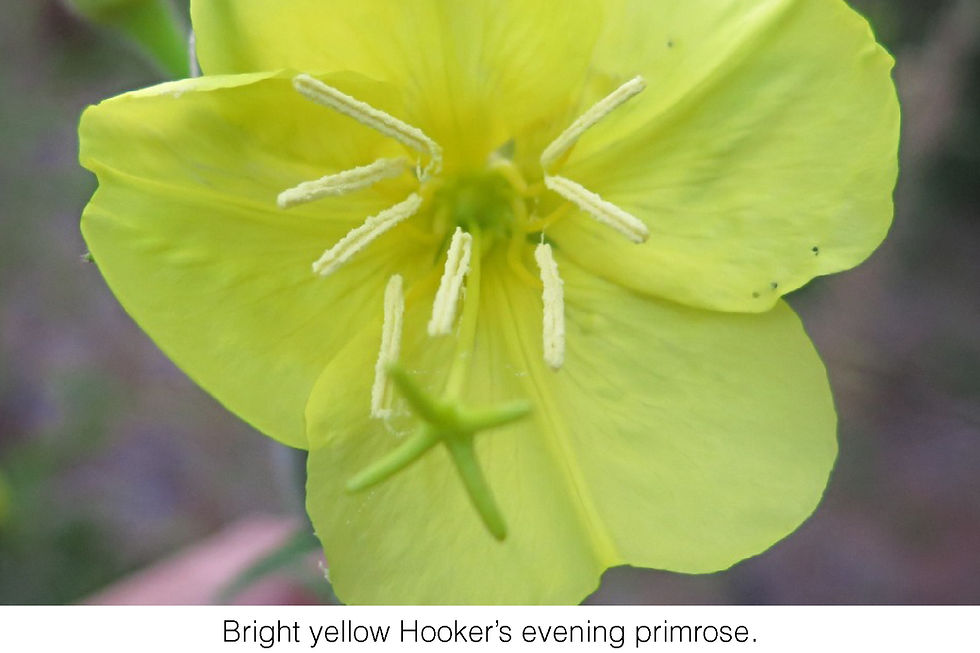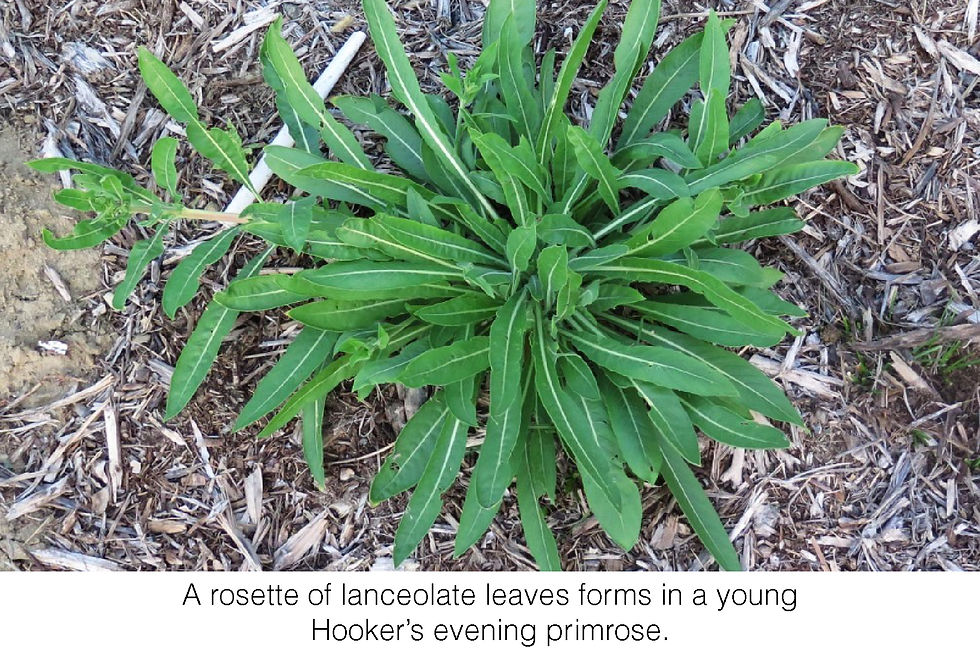GOING WILD WITH NATIVES: Hooker’s Evening Primrose: Food for Wildlife
- Rachel Cobb

- Aug 31, 2018
- 3 min read

By Linda Jones.
One reason I garden with native plants is to recover a little of the lost habitat for wildlife. One fun plant that supports a variety of wildlife, especially in the fall, is Hooker’s evening primrose, Oenothera elata. There are two native O. elata subspecies in California: hirsutissima (which is widespread throughout the western United States) and hookeri. Since the subspecies are so similar and they can be found growing in close proximity to each other, and as they are both referred to as Hooker’s evening primrose, I will not separate them here.

This species of evening primrose is a perennial herb and, as opposed to most primroses, is an erect form that can grow to seven feet or more. In the first year of development, a rosette of twelve-inch long, lanceolate to elliptical leaves form, anchored by a tap root. In the second year, the tall, reddish stalks grow and bright yellow, two- to four-inch flowers bloom at the top of the stalks throughout the summer and into fall. Flowers may be produced year round. The blossoms have four heart-shaped petals with four sepals and eight stamen.
The yellow flowers start to open near dusk and bloom overnight when they are pollinated by the white-lined sphinx moth (also called hawk or hummingbird moth; related to—but not—the dreaded tomato horn worm). Bees, including native bees, butterflies, and hummingbirds that are active at dusk and dawn, also come to harvest the rich nectar and pollinate the flowers. Flowers are often open throughout the day, and they will wilt and turn orange as the day progresses. The bloom starts at the bottom of the flower stalk and a few blossoms open sequentially up the stalk each day. The flowers have a fragrance at night that attracts the pollinators.
In the fall, the two-inch-long seed pods open and spill their ripe seeds. This is when busy seed-eating birds cover the plants to feed—American and lesser goldfinches particularly, but also wrentits and other small seed eaters.
Adding Hooker's Evening Primrose to Your Garden's Wildlife Menu
Seeds are easy to gather and plant in situ. Although Hooker’s evening primrose is somewhat drought tolerant and is a pioneer plant in disturbed areas, it commonly occurs in more moist areas along streambeds and banks, or in areas that are seasonally wet. It blooms more if it has supplemental water. In summer, watering once per week is recommended. Grow it in sun or partial shade. This is not a fussy plant and grows in a variety of soils and conditions. Once established, it can be neglected.
Hooker’s evening primrose produces a prodigious amount of seed, so you may need to do some “crowd control” in your garden. In the wild, the plants are ultimately shaded out by taller shrubs and trees and therefore large areas are not a monoculture of evening primroses.
A few notes about this plant:
It is winter deciduous, so plant it where other plants can fill in at that time.
It grows in disturbed areas and will help stabilize a hillside.
It is edible and was widely used in the Old West for food. The roots, leaves, and stems can be eaten raw or cooked; however, it does not appeal to everyone since it is mucilaginous. Seeds were sometimes ground and made into a meal.
Some sources suggest that the name Oenothera probably comes from the Greek word for "wine". (The Greeks believed that the roots of their primrose species could neutralize the effects of over-indulging in wine. Hmmmmm...) "Donkey catcher" and "wine seeker" are two other possible interpretations.
The seeds produce an oil used in soaps and anti-inflammatory drugs.
Gamma-linolenic acid (an omega-6 fatty acid) was first isolated from the evening primrose. It is used by pharmaceutical companies and the nutrition industry for a wide variety of conditions.
There is some indication that evening primrose can be irrigated with reclaimed water due to its tolerance of salts.
In California, the family of evening primroses, Onagraceae, includes sun cups (Camissonia species), Clarkia species, and California fuchsia (Epilobium canum).
All images are courtesy of the author.
